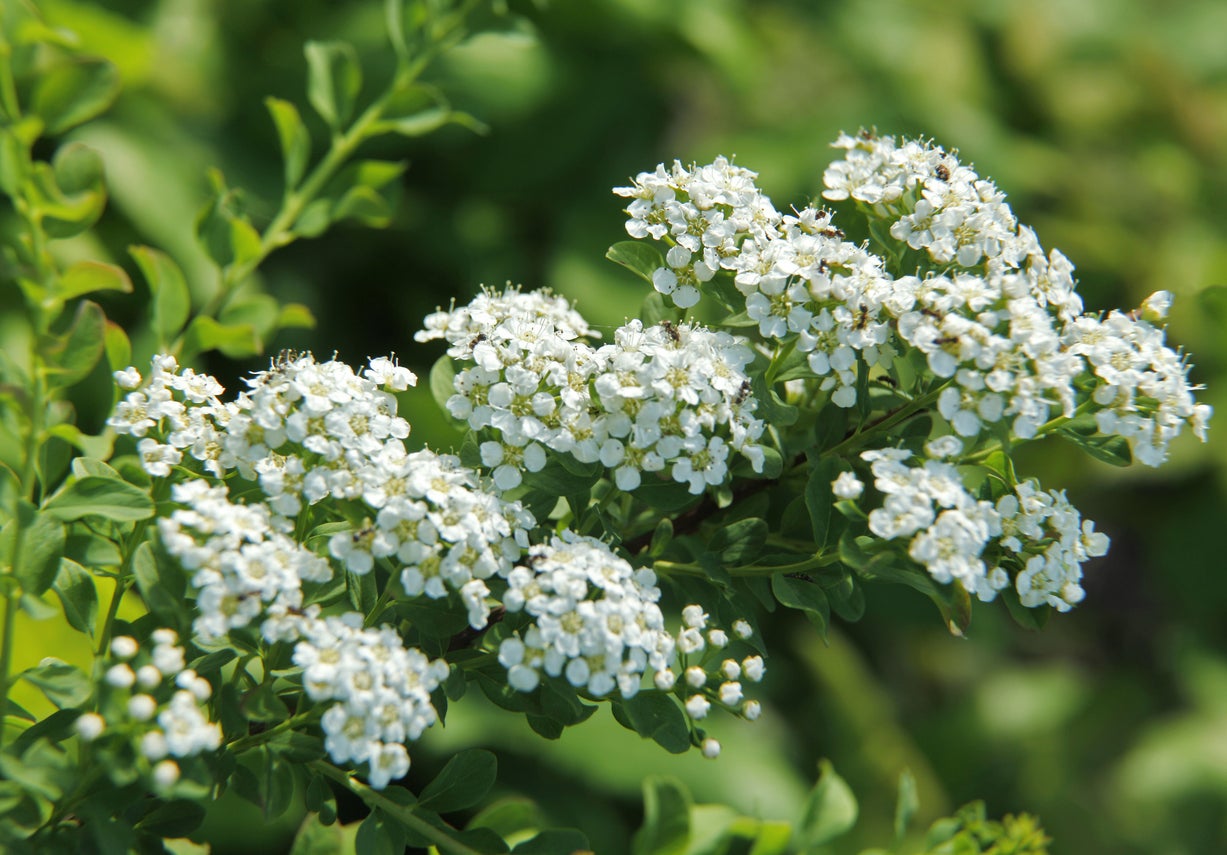
Spirea is a reliable blooming shrub that thrives in USDA zones 5 through 9. Spirea blooms consistently and profusely on new wood after some time the plant begins to look a bit bedraggled with few blooms.
Pruning spirea after a couple of years will rejuvenate the plant. The following article contains information on how to prune spirea along with other helpful tips for cutting back spirea shrubs.
About Spirea Pruning
There are a number of spirea cultivars ranging in height from 2 to 3 feet (61-91 cm.) tall up to 10 feet (3 m.) and the same across. All spirea shrubs produce flowers on new wood, which is why cutting back spirea shrubs is so important.
Spirea pruning not only rejuvenates the plant and encourages blooming, but it also helps to restrain the size of the shrub. Also, trimming spirea back, in many cases, will induce a second bloom. Other varieties of spirea, such as Japanese spirea, respond better to pruning in the late winter months.
How to Prune Spirea Bushes
Spirea shrubs respond well to pruning. In the spring, after the first blooms are spent, cut the dead flowers back by trimming spirea’s stem tips back to the topmost leaf on each stem.
Throughout the summer, the plants shape can be maintained by cutting back overgrown spirea shoots or stems as well as any dead or diseased branches. Try to make the cuts within ¼ inch (6 mm.) of a leaf or bud. Fall is the time for the most severe pruning of spirea. With sharp shears, cut each stem back to about 8 inches (20 cm.) from the ground.
Don’t worry that the plant won’t bounce back. In the spring, spirea will reward you’re courageous pruning with new stems and plenty of blossoms. Japanese spirea should be tip pruned in late winter or early spring prior to bud swell and before the shrub leafs out.
Sign up for the Gardening Know How newsletter today and receive a free copy of our e-book "How to Grow Delicious Tomatoes".
Also, at this time, remove any dead, damaged, or diseased stems along with those that cross each other. To keep spirea looking great and to promote blooming, trim the plant at least twice per year.

Amy Grant has been gardening for 30 years and writing for 15. A professional chef and caterer, Amy's area of expertise is culinary gardening.
